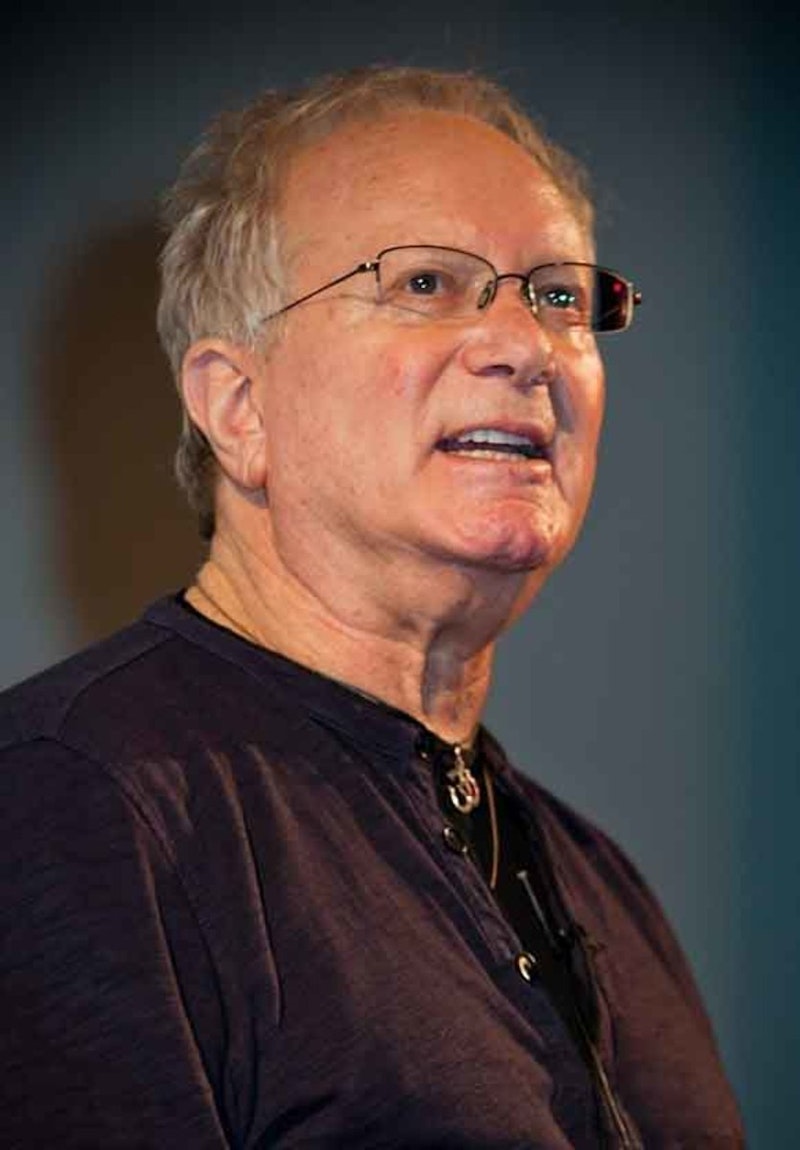The horizon is a crayon line, the sun a blot. I look at dream Syd Field and he turns. “The material has to be designed for and incorporated into your story line, then executed to the best of your ability,” he says. The air sighs; oddly colored grasses bend. A voice, lost from its body, cries out; or was that the wind? “He wasn’t capturing the dimension, either physically or emotionally, on the page,” says dream Syd Field.
Eyes white, pupils gone, dream Syd Field says to write character. People remember character. “But we usually forget all the cool car chases and explosions that occupy the majority of action films that fill our theaters,” he says. “They all look alike.” The sky ripples; two paragraphs pass, not long ones. “What makes a good action film great?” dream Syd Field calls out. “The electricity of the action sequences. Remember the chase scenes from Bullitt and The French Connection?” His eyes are still white, still without pupils. “Or the last sequence of The Matrix?” he says.
I don’t remember the last sequence of The Matrix.
“Or Butch and Sundance jumping into the river gorge after being relentlessly chased by the Super Posse in Butch Cassidy and the Sundance Kid? The list goes on and on.” Dream Syd Field’s mouth is desperate for words, any words. “My experience of Chinatown was literally a voyage of discovery,” he says, and he means the detective drove around town looking for clues. “Many screenwriters might approach a story like this from the perspective of dialogue,” he says, meaning they might write a lot of exposition lines. “When you’re in the paradigm, you can’t see the paradigm,” he gulps.
His eyes still blank marble, dream Syd Field’s mouth accelerates. “So, what are some qualities that make up good screenwriting?” he says. “Several things, perhaps the most important of which is to understand that the foundation of all good dramatic writing is conflict; without conflict, you have no action; without action, you have no character; without character you have no story. And without story, you have no screenplay.” The wind blows his words, carries them 114 pages into the past. “As I repeat often, all drama is conflict,” dream Syd Field says back then, on page 132. “Without conflict, you have no action; without action, you have no character; without character you have no story. And without story, you have no screenplay.”
The wind blows again. We stand on page 41. “As I said before, and will say again, all drama is conflict,” states dream Syd Field. At the bottom of the page, the horizon returns his words to us: “Without conflict, there is no action. Without action, there is no character.” And on page 25: “All drama is conflict. Without conflict, you have no action; without action, you have no character; without character you have no story; and without story, you have no screenplay.”
Truism crowds the sky. Rehash and verbal bloat litter the landscape. Nothing adds up as it should. Can we awake? “Syd Field is the preeminent analyzer in the study of American screenplays,” says James L. Brooks. “A virtual must for aspiring screenwriters,” says Lynda Obst. From close by, there glares a terrifying whiteness. “The essence of character is action—what a person does is who he is,” says dream Syd Field, staring from behind his blank eyes. For dream Syd Field never left us.
All quotes are from Screenplay: The Foundations of Screenwriting by the late Syd Field.

